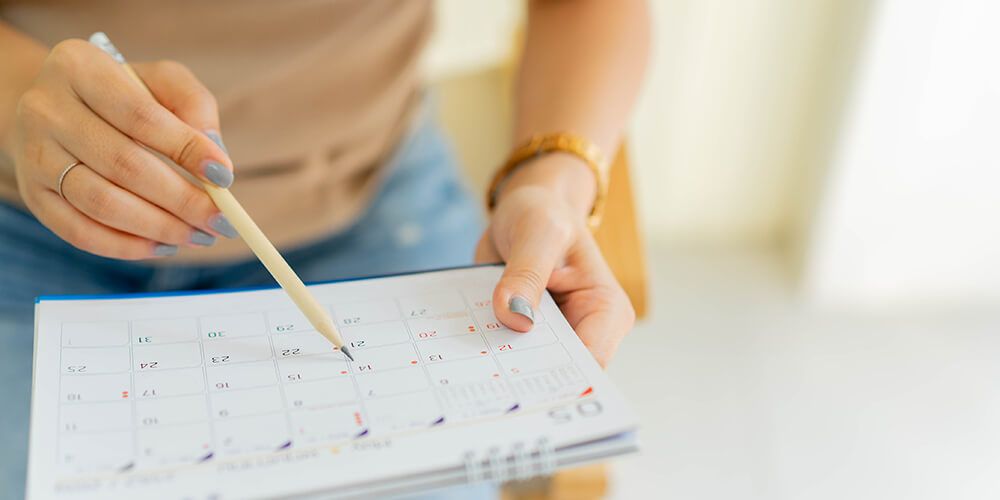What are the key dates for the 2023/24 UK financial year?
Business Banking

Want to keep on top of your taxes? Whether you’re a business owner or self-employed, it’s important to have a good understanding of the 2023/24 UK tax year. With the cost of living crisis in full swing and several key tax dates on the horizon, it’s more important than ever to make sure you know what’s coming up.
To help you figure out your finances for the year and make sure you don’t miss anything, we’ve pinpointed the crucial dates to keep an eye out for and why. Let’s dive in and see what this tax year has in store.
April 2023
5th April 2023 — 2022/23 tax year ends
In the UK, the tax year runs from the 5th April to the 6th April every year. The end of the tax year signifies when your current tax year allowance stops. If you’re employed, your tax code will be refreshed. However, if you’re self-employed, you’ll be required to submit a tax return before 31st October 2023 for paper returns or 31st January 2024 for online returns (more details below).
6th April 2023 — 2023/24 tax year begins
On the 6th April, the new tax year begins. At the start of a new tax year, it’s typical for some changes in regulations and rates to come into play (usually announced in the Spring Budget). It’s a good idea to familiarise yourself with any of these changes to make sure you’re not taken by surprise.
May 2023
31st May 2023 — 2022/23 P60 documents must be issued to employees
By the 31st May, your employer should have issued your P60. Unsure of what a P60 is? A P60 is a summary of your pay from the tax year — as well as any deductions you may have received. If you’re self-employed you won’t be part of the PAYE scheme and therefore won’t receive a P60.
If you’re any employer, you’ll need to distribute P60 forms to all employees who were on the payroll on the last day of the 2022/23 tax year — more details here.
July 2023
6th July 2023 — 2022/23 P11D documents must have been issued to employees
The P11D form is used to report benefits in kind. Benefits in kind are, essentially, any services or items you receive on behalf of your company, such as interest-free loans, company phones, or private healthcare. For more information on what’s considered a taxable benefit and how to report them, visit the gov.uk website.
22nd July 2023 — Payment of 1A National Insurance contributions (NICs)
If you’re an employer, the Payment of 1A NICs are due by22nd July if doing so digitally (19th if done by post).
31st July 2023 — PAYE settlement agreement submission deadline
HMRC split the self-assessment tax bill over two instalments. Only applicable to those who are self-employed, the second PAYE payment towards your tax bill for the year needs to be submitted by 31st July.
October 2023
5th October 2023 — Deadline for Self Assessment registration if you have set up as self-employed in the 2022/23 tax year
If you’ve taken the plunge and decided to become self-employed over the last year, then you’ll need to register for Self Assessment with HMRC by 5th October. You may face a fine if you miss this deadline.
If you’re new to the process and have never applied for a Self Assessment before, here’s a breakdown of what to expect after registering:
- Once you’ve received your registration, HMRC will issue you a letter with your 10-digit Unique Taxpayer Reference number.
- The code will allow you to set up your account for the Self Assessment online service.
- Once you’ve stepped through the process online, HMRC will be able to determine your Income Tax rate and National Insurance due.
Note: National Insurance rates are the same as last year, following an increase in the 2022/23 tax year.
5th October 2023 — Deadline for Self Assessment registration if you have set up a partnership in the 2022/23 tax year
If you are a business owner and have started partnership in the 2022/23 tax year, you have until 5th October to register — check the gov.uk website for more information.
31st October 2023 — Deadline for postal submission of Self Assessment tax returns
Though the majority of the world of tax is now navigated online, many UK taxpayers still file their Self Assessment tax returns via post. The deadline for submitting your postal tax return is 31st October.
You will need to contact HMRC and request an SA100 tax return form, so make sure you do this in plenty of time ahead of the deadline.
With this deadline being three months earlier than the online submission date, it means that you’ll still get a chance to submit your tax return form digitally, should you miss the October date.
We’d advise familiarising yourself with the digital process, as it’s thought that the physical submission forms are set to decrease in use over time.
November 2023
Autumn Budget
Typically, the Chancellor’s Autumn Budget takes place in early November or late October — however, there’s been no date confirmed at the time of writing.
December 2023
31st December 2023 — Due date to file company accounts with Companies House for limited companies with 31 March 2023 year-end
January 2024
14th January 2024 — Income tax due date for CT61 period to 31 December 2023
31st January 2024 — Deadline for filing Self Assessment tax returns for tax year ended 5 April 2023
This is the final day to file your Self Assessment tax return online. Though the deadline is technically the 31st, we recommend submitting your form in plenty of time beforehand so you plan the tax year ahead with no rush.
31st January 2024 — Deadline for filing 2022/23 Capital Gains Tax
This is the deadline for Capital Gains Tax payment on any assets sold in the 2022/23 tax year. This tax is paid on assets you own that have increased in value that you’ve sold (or ‘disposed of’). You can find information on what qualifies as an asset on the gov.uk website.
